I spent a lot of time selling reptiles to beginning keepers in the late 90s. I usually encouraged fledgling keepers to select species that were easy to care for – most commonly, I’d recommend leopard geckos.
But unfortunately, they weren’t always an easy sell. Often, the prospective keeper would end up selecting a green iguana or some other diurnal herbivore. There are certainly plenty of things to like about these lizards, but they also present several challenges. Most require elaborate and expensive lighting systems, and their diets are tricky to balance.
But then I stumbled across my first crested gecko (Correlophus ciliatus) at a local reptile expo. I chatted with the seller while peering at the cute little gecko clinging to the walls of his tank.
As he explained their care regimen, it dawned on me that these lizards may end up being one of the very best lizards for new keepers. They may even replace leopard geckos as my default recommendation. Keep reading and I’ll explain why these lizards are an excellent choice for beginners and what you’ll need to do to maintain one of your own.
Crested Gecko Facts
Before we discuss the biology, behavior and care requirements of crested geckos in detail. Let’s take a moment to appreciate a few neat facts about these critters.
- Crested geckos were first discovered in New Caledonia in 1866. However, they seemingly disappeared in subsequent years. This led biologists to suspect that the species had become extinct.
- Live individuals were found on a 1994 expedition, thereby reintroducing the animals to modern scientists and keepers. Three separate populations appear to persist.
- New Caledonia does not allow these lizards to be collected for export anymore, but several individuals were shipped to North America and Europe in the years following their rediscovery. These captives went on to form the first captive-bred lineages, from which those on the current market descend.
- Crested geckos have a somewhat unusual diet by gecko standards. Like most other geckos, they eat insects, but they also consume large amounts of fruit too.
- While some types of geckos (notably, members of the family Eublepharidae) have eyelids, crested geckos, like most others, lack eyelids entirely. This causes them to lick their eyes frequently to keep them clean and moist.
- Wild crested geckos are currently threatened by an introduced fire ant species. The ants not only compete with the geckos for food, but they’ll also actually prey on the geckos from time to time.
- Like most other geckos, crested geckos will shed their tails if they feel threatened. However, unlike most other lizards that shed their tails, crested geckos do not grow a replacement tail.
- Crested geckos can retain sperm for several months, which allows a female to produce multiple egg clutches following a single mating. Eggs are typically deposited once per month, and two are deposited at a time.
Crested Gecko Anatomy
Generally speaking, crested geckos are built like most other geckos. They have four muscular limbs, a large head, and a long tail. However, there are also a few distinctive features that differ from those of other species.
For example, crested geckos have moderately baggy skin has a slightly different texture from the skin of many other gecko species. They also occur in several different color forms, ranging from red to yellow to black, and they may or may not have a conspicuous pattern of dark markings too.
However, the most notable aspect of a crested gecko’s anatomy is surely the ridge of fringe-like scales found on each side of their body. The ridge starts above the eye on each side of the face and continues along the side of the back until it merges with the fringe from the opposite side near the tail base.
These scales are not only the inspiration for the species’ common name but their scientific name too: “Ciliatus” refers to the scale’s resemblance to the cilia sometimes seen on single-celled organisms.
Although it isn’t possible to distinguish the sex of young crested geckos, it becomes relatively easy to do so once they reach 3 to 5 months of age. Simply look for two bulges created by the lizard’s hemipenes located near the base of the tail to identify males. Females have no such bulges.
Additionally, males have a set of prominent preanal pores near their vents.
Size & Weight: How Big Do Crested Geckos Get?
Crested geckos are medium-sized geckos. They reach about 8 inches in total length, with half of this length being comprised of the tail.
Upon reaching maturity, most crested geckos weigh between 25 and 50 grams. Males are usually considered mature and capable of breeding at around 25 grams, but females may not successfully reproduce until reaching 35 grams or more.
Lifespan: How Long Do Crested Geckos Live?
Crested geckos have only been kept in captivity for about 25 years, so a typical lifespan has yet to be established with any certainty. Nevertheless, they are clearly a long-lived species, who can likely live for 20 years or more.
Nevertheless, the average lifespan of these lizards is probably somewhere in the neighborhood of 10 to 15 years.
Crested Gecko Behavior & Health
Crested geckos are hardy lizards, who aren’t predisposed to many health problems. However, improper care can lead to a variety of illnesses. We discuss these in greater detail in our Complete Health & Behavior article, but we’ll summarize the key points below.
- Poor Sheds – Geckos who become dehydrated or raised in an insufficiently humid habitat may experience poor or incomplete sheds. If addressed promptly, the condition usually doesn’t cause serious harm. But, if left untreated, retained skin can lead to infections or lost digits.
- Metabolic Bone Disease – Metabolic bone disease (MBD) occurs when an animal doesn’t receive enough calcium in its diet, or it doesn’t have enough Vitamin D3 to absorb the calcium present. Crested geckos suffering from MBD may exhibit poor bone development, jaw deformities or muscle tremors among other symptoms.
- Bacterial and Fungal Infections – Bacterial and fungal infections usually result from poor husbandry and filthy habitat conditions. These types of health problems will usually require your vet’s help to address. Accordingly, prevention is the best strategy.
- Dystocia (Egg-Binding) – Females who lack sufficient fat or calcium reserves may have difficulty depositing their eggs. This is a medical emergency, which requires immediate veterinary care to save your animal’s life.
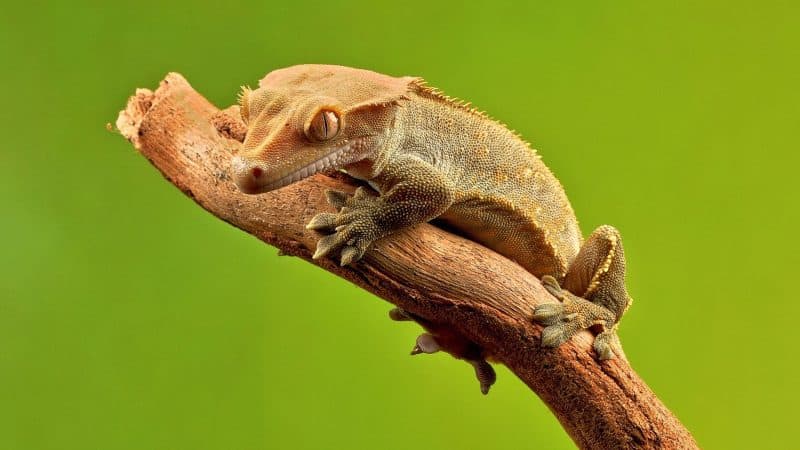
Crested Gecko Diet
Crested geckos are omnivorous lizards. This means that they subsist on a combination of plant- and animal-based foods. Insects and small spiders form the bulk of the animal-protein they consume, but large individuals may eat small lizards or frogs from time to time. Fallen fruits and flower nectar make up the plant-based portion of their diet.
It’s usually easy to provide a captive diet that mimics that of wild-living crested geckos. Most keepers do so by providing a combination of commercially produced crested gecko food and live insects.
Commercially produced foods usually come in powdered form. You simply need to add a bit of water to the powder, stir it until it reaches a pasty consistency and then offer it to your pet. Historically, crested gecko keepers would feed fruit-flavored baby foods to their lizards, but this is a bad idea. Baby food is formulated to meet the needs of humans, not geckos. Accordingly, it can cause health problems if fed to crested geckos over the long-term.
Crickets, small roaches, and silkworms are some of the best insects to feed crested geckos. Just be sure that you offer your pet insects that are no longer than the distance between your pet’s eyes. This will help prevent impactions, which occasionally prove fatal.
> Read More: The Crested Gecko Diet
Crested Gecko Habitat
Crested geckos can thrive in a variety of different types of enclosures. Aquaria and other types of glass enclosures will work, but front-opening, plastic enclosures are usually preferable. Not only do plastic habitats help give your lizard more privacy (which will help keep his stress level low), but they’re also lighter and less likely to break.
Keepers use habitats of varying sizes when maintaining crested geckos. Most probably use habitats that are 18- to 24-inches tall and provide about 1- to 2-square feet of floor space. However, this should be considered the minimum size required, and larger habitats are almost always preferable.
You’ll need to add a suitable substrate to the habitat and plenty of furniture that allows your gecko to climb and hide as necessary. Paper towels, newsprint, cypress mulch, and orchid bark are all effective substrates, though each offers different benefits and drawbacks. Real or fake branches and plants will provide climbing and hiding opportunities, although some keepers simply add several sheets of egg carton to the habitat.
Crested geckos don’t require any type of specialized lighting – the ambient lighting from your room will be adequate.
However, you can use fluorescent bulbs to bring out your pet’s colors and make the vivarium come to life. Just be sure to use a low-watt light to avoid overheating the habitat.
Crested geckos thrive in temperatures between about 68- and 80-degrees Fahrenheit. Accordingly, heating devices are usually unnecessary. If you do need to use a heating device, be sure to place it at one end of the enclosure to provide a range of temperatures inside the habitat.
> Read More: The Crested Gecko Habitat
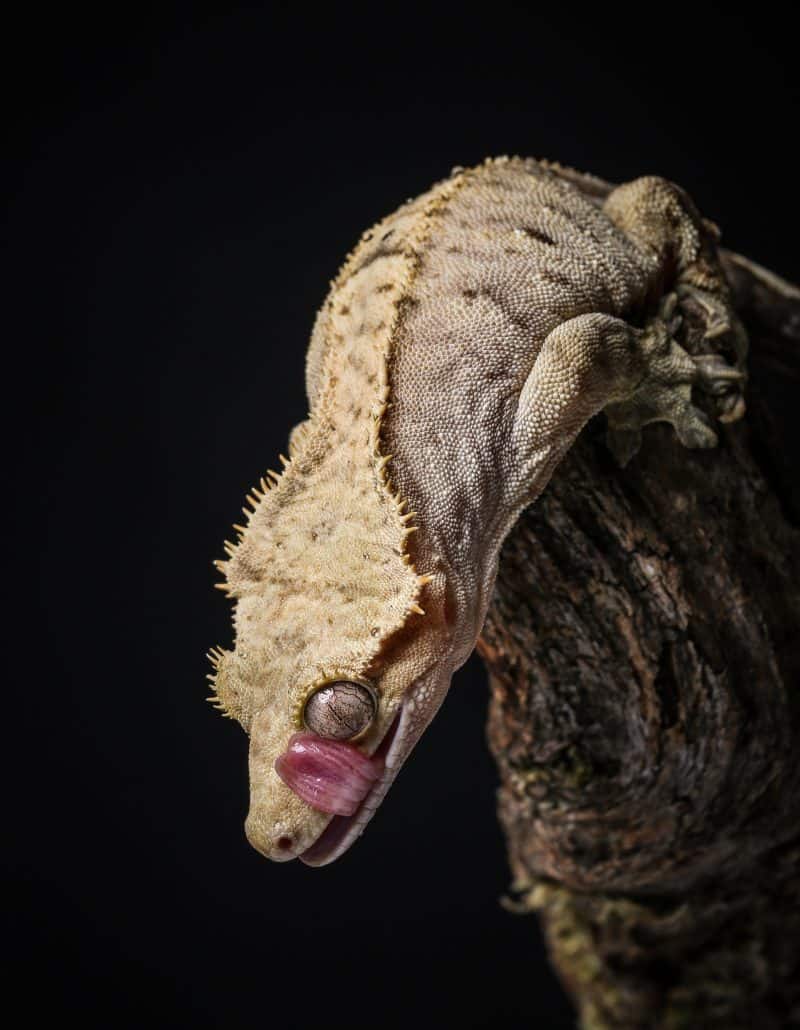
Young Crested Geckos: Hatchling Care
The care requirements for young crested geckos are similar to those of adults. They require an enclosure with plenty of climbing and hiding opportunities, and they need the habitat to be in the low- to mid-70s. They also need a high humidity level to prevent dehydration and poor sheds.
However, you’ll usually want to provide hatchlings with a relatively small habitat. This will not only make it easier for your pets to catch their insect prey, but it’ll also be easier to keep the humidity level high enough. Make sure that you provide your young pet with suitably small insects, as young crested geckos will often attempt to swallow prey that is too large. As with the adults, make sure any insects you offer are shorter than the length between your lizard’s eyes.
Don’t handle your young gecko very much until it is nearly full-grown. Young crested geckos are often quite flighty, which can lead them to leap from your hand. Additionally, young crested geckos will often shed their tails at the slightest touch.
Adult crested geckos are usually best kept singly outside of breeding attempts, but you can keep two or three hatchlings together in a single habitat.
Price: How Much Do Crested Geckos Cost?
The price of a given crested gecko can vary pretty significantly. You may be able to find crested geckos for as little as $30 or $40, but you could easily pay 10 times as much for a top-of-the-line specimen.
Crested geckos are a polymorphic species, meaning that they can display several different colors or patterns. And although crested geckos of any color can make a good pet, the relative rarity of a gecko’s color and pattern will play a large roll in the lizard’s cost. Geckos displaying common colors and patterns are generally relatively affordable, while individuals who display unique or rare color patterns often cost much more.
Age and sex also influence the cost of crested geckos. Hatchlings are generally much cheaper than older juveniles or adults are because the breeder or retailer has had to spend more money caring for older individuals than they do to care for hatchlings. And because breeders often want as many females as they can get their hands on, males are more common in the marketplace, and therefore cheaper.
Finally, it’s also important to note that crested geckos with intact tails often bear higher price tags than those who’ve lost their tails.
Conclusion: Are Crested Geckos Good Pets?
A lot of reptiles can make great pets, but few have as many things going for them as crested geckos. They’re not only hardy animals who can usually endure the mistakes keepers often make, but they also have simpler care requirements than many other herps do. Simply put, they’re some of the easiest reptiles to care for and they are ideally suited for beginning keepers.
This doesn’t mean that crested gecko ownership is something to be taken lightly. You’ll still need to provide your new crested gecko with a proper habitat, diet, and care regimen. But most owners will surely agree that crested geckos are some of the best captives a reptile-lover could want.
Be sure to share this article with your friends if you’ve found it helpful. Crested geckos deserve plenty of attention by reptile enthusiasts, so do your part to spread awareness of these magnificent lizards.

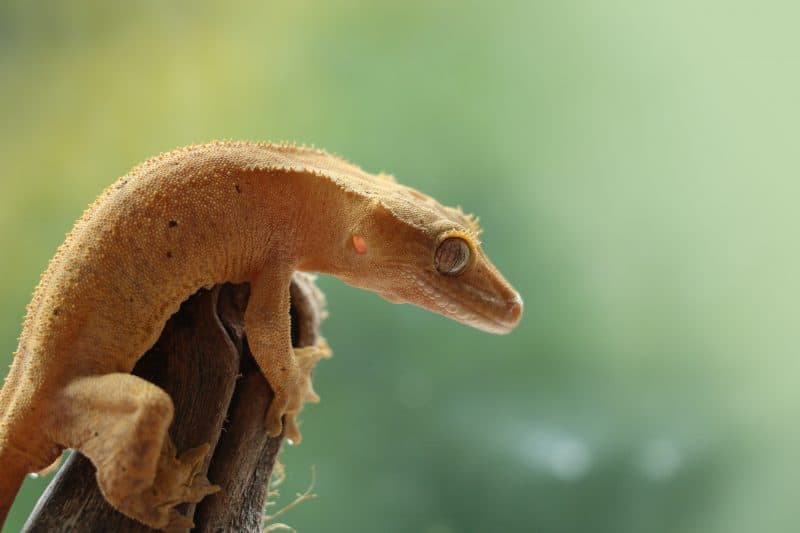









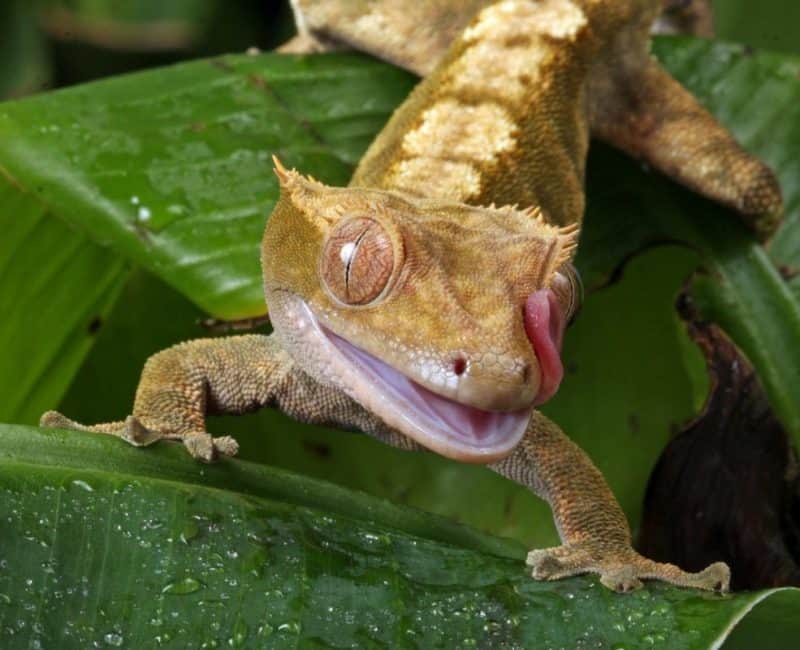
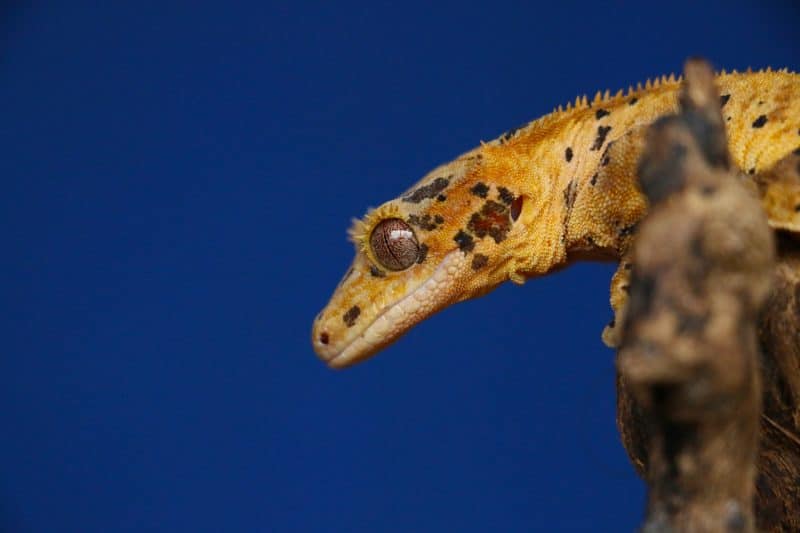
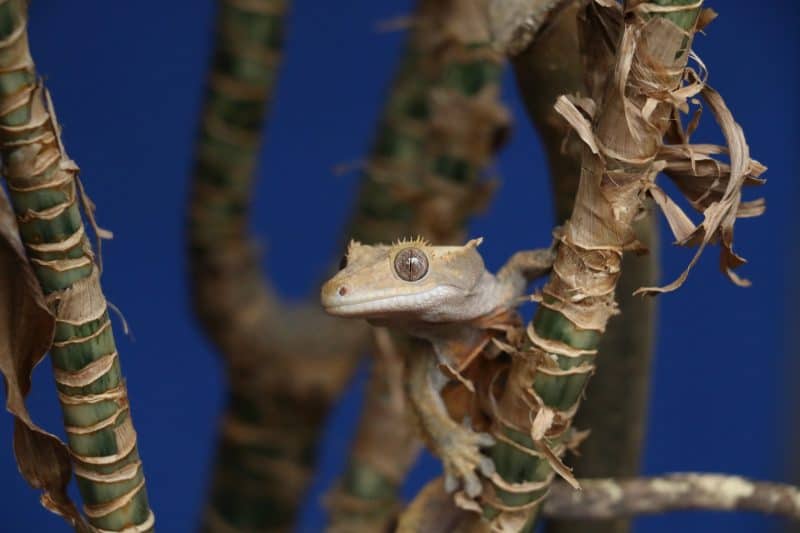
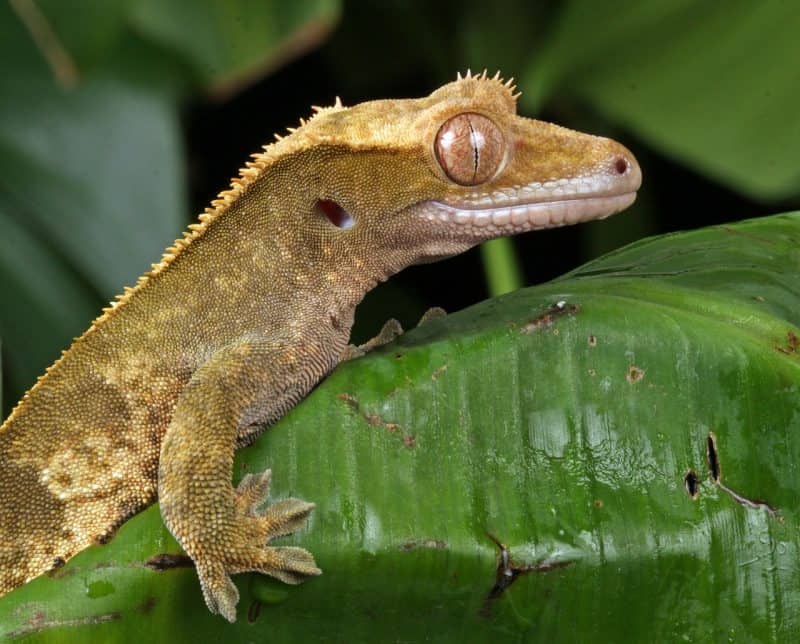
19 Comments
I have a baby crested gecko. Should I feed him every day because he only gives the spoon a few licks then turns away. Also we’ve had him for 2 days and he hasn’t pooped yet. Should I worry? Thanks!
Hi Lena,
When it comes to your baby crested gecko, it’s important to understand their normal feeding and pooping routines. Typically, these geckos should be fed 3 to 4 times a week, but their appetite can vary, so you may need to adjust this schedule based on your specific gecko’s needs.
As for their pooping routine, baby crested geckos usually poop once every one to three days, though this frequency can differ, especially in a new environment.
Regarding your gecko only licking the spoon a few times and then turning away, this behavior could be due to it adjusting to its new surroundings and diet. Each gecko has its own preferences, and it might take some time for your pet to get accustomed to the feeding method and the food’s taste.
If you continue to have concerns, especially if this behavior persists, seeking advice from a reptile veterinarian would be beneficial.
I have a young crestie and it only licks it’s food a little bit. Is that normal? I hold out his food on a toothpick and he’ll lick it a tiny bit then turn away. I feed him every evening. Am I doing something wrong?
Hi Gloria,
Your young crested gecko licking its food and then turning away could be due to several reasons. It’s important to offer a varied diet including different types of bugs and supplements.
Also, ensure the habitat is stress-free with appropriate temperatures (no more than 85°F during the day and no lower than 75°F at night) and high humidity levels (60-80%).
If these conditions are met and the issue persists, it might indicate an illness such as a respiratory infection or metabolic bone disease, in which case a visit to a veterinarian is advisable.
I’ve had a crested gecko since July 2001 not sure how old it was when we got it was very small juvenile and still going strong 22 years later
Hi, Bobby Sue.
I’m a contributor to The New York Times doing research for a potential story on crested geckos.
Is yours still alive and well?
Can you please tell me what you like about him/her and what makes him/her a good pet?
Thank you,
Karen Angel
The best reptile to own. I’ve owned a crested gecko for 7 years. They are friendly (it may take a year or two to warm up to you) and they are more akin to a puppy than an alligator. Really a great experience all around. They like to jump but aren’t fast enough to escape into the house somewhere. A few tips find a place that gets light sunlight for an hour or so during the day but you don’t want them overheating. Just put the crickets I buy 70-100 (all my gecko will eat) into the enclosure, you will have very few lost crickets and your gecko will be fed well. I like ecoearth coconut substrate it’s clean, holds moisture well and easily washes away. You cannot overwater as long as you don’t have a pond. Water daily and don’t forget in the summer. I put about a quarter cup of bleach in a five gallon pail and let all the items soak for at least 30 minutes and then soak at least ten in just water to rid the bleach. I use the wipe out spray on the terrarium do not forget to rinse. Clean the enclosure every two weeks or you will have a gnat problem. I have a plastic film of scenery on the back glass and found that my gecko gigi was pulling it down halfway and making an enclosure so now I leave it that way after cleaning. The most rewarding experience owning a crested gecko! I hope I have helped!
Thinking about adopting one for my son. Do they tend to like being held? And are they generally fast? Worried about him getting away while my son tries to hold him. Thank you!
Hey, Laurie!
What a cool mom! I’m jealous!
It depends on the age of your son. If he’s 6, a crestie may not be ideal; if he’s 12, he should have no trouble!
Crested geckos aren’t particularly “flighty” but they don’t “enjoy” being held, either – though most will tolerate it. Crested geckos are a good first lizard, as they’re easy to care for. But, if you really want a pet for him to hold, you’d probably be better off with a bearded dragon, leopard gecko, corn snake, or ball python.
Best of luck!
wow this is amazing! I was thinking about getting an gecko and now I know what kind I’m getting.
Awesome, Glory!
Best of luck and have a blast!
We have a young Crestie and he/she is such a character.. extremely lively and loves locusts !! Do u still need to give it the paste as well as the live food ?? I’d say he had a couple of locusts a day and doesn’t really touch the paste.
I found this site really helpful Thankyou xx
Hey, Suzanne.
It’s probably just related to his age. I’d recommend continuing to offer the paste; if he doesn’t eventually start to eat it, you should probably look for a different brand/flavor.
Best of luck!
I just got one also, and again he’ll eat the crickets immediately, but it’s like the crested gecko food isn’t even there, he won’t touch it, and he’s not active at all really …..please help is something wrong?
Hey Melissa,
First of all, congratulations on your new pet crestie! They are lovely creatures.
There could be a few reasons why your crested gecko isn’t interested in the food you’re offering. It could be that he’s not used to the taste or texture of the food, he could be stressed from being in a new environment, or he could be sick.
If your crested gecko is showing other signs of being unwell, such as lethargy, lack of appetite, or abnormal stool, then I would recommend taking him to see a reptile veterinarian. Otherwise, you could try offering a different type of crested gecko food, or feeding him live food instead of dry food.
Thanks
thank you for this article, I just got one and it is amazing. thanks for the help!
Glad you found it helpful, Isaac!
They certainly are neat lizards!
I think this was very helpful. I don’t know why NO was the only choice shown but that was not my response. This article was very helpful to me. Tons of information. Very thorough article. Thanks
Hi Robert, Thanks for this nice feedback! It’s always a pleasure to know that our articles can help 🙂
The button was not displaying well on tablet and mobile. It should be fine now. Thanks for letting us know!